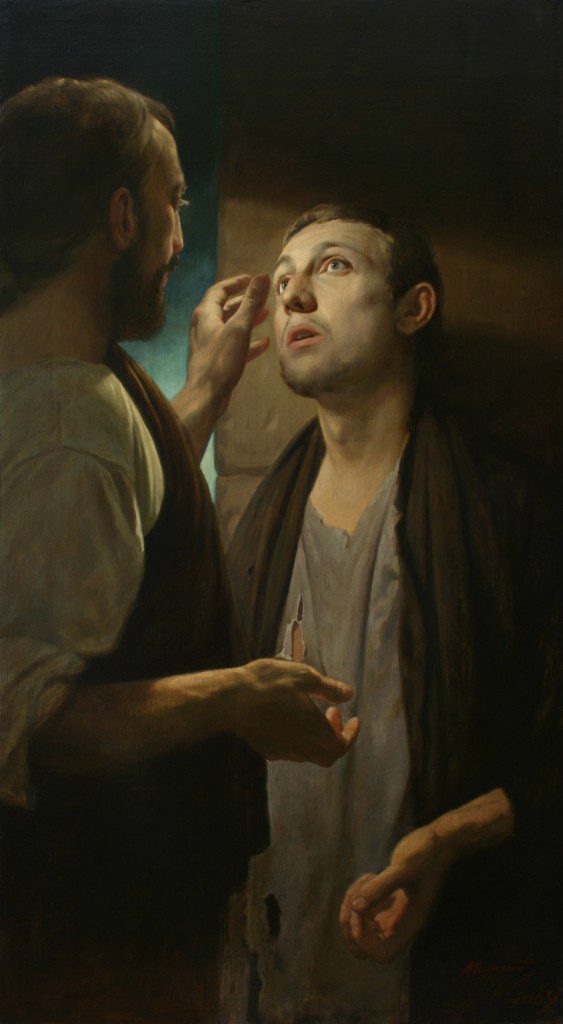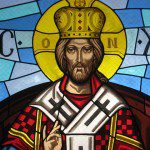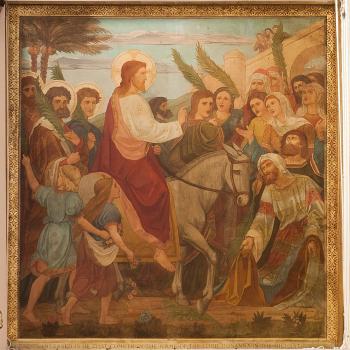This is the third in a series of reflections on faith and fidelity, sparked by Matthew Bates’s new book Salvation by Allegiance Alone. In the first post, I wrote about Bates’s central thesis: that “faith” (Greek pistis) in the New Testament refers primarily to allegiance to Jesus as Lord and King, rather than intellectual belief. This isn’t to say that Bates dismisses belief altogether; he writes that allegiance has three dimensions, and the first of these is “mental affirmation that the gospel is true,” followed by “professed fealty to Jesus alone as the cosmic Lord,” and “enacted loyalty through obedience to Jesus as the king.” In my second post I explored what Bates presents as the gospel that is to be “mentally affirmed.”
Is obedience a result of belief, or is belief a result of obedience?
In Bates’s formulation, mental affirmation precedes professed fealty and enacted loyalty – it is primarily a starting point (although of course it continues to exist as part of allegiance alongside the other two). We believe these points of the gospel to be true, and because they are true – particularly that Jesus is enthroned and worthy of worship – we choose to profess our fealty to Jesus as Lord and act in obedience to Him. (I won’t go into detail about whether this violates a faith / works dichotomy, but Bates does directly address this question; read chapter five in the book , or at least this summary by Scot McKnight). I don’t think Bates is wrong here – faith does begin as an intellectual assent, and the Doctrine of the New Church frequently states that faith or belief comes first in time, even if embodied love is first in intention.
But there is also a sense, which Bates doesn’t go into, in which enacted obedience precedes genuine belief, and makes authentic trust possible. True Christian Religion emphasizes this:
The universal principle of faith on man’s part is that he should believe in the Lord; for by believing in Him there is conjunction with Him and thereby salvation. To believe in the Lord is to have confidence that He saves; and as only those who live rightly can have this confidence, this, too, is meant by believing in Him. (§2, emphasis mine)
This idea – that living rightly allows us to see the truth – comes up in several places in the New Testament, but nowhere more clearly than in the Gospel of John. One of the most direct statements on this is John 3:18-21:
He who believes in Him is not judged; but he who does not believe is judged already, because he has not believed in the name of the only begotten Son of God. And this is the judgment, that the light has come into the world, and men loved darkness rather than light, because their deeds were evil. For everyone practicing evil hates the light and does not come to the light, lest his deeds should be exposed. But he who does the truth comes to the light, that his deeds may be clearly seen, that they have been done in God.”
Doing the truth leads to loving the light, and loving the light leads to faith in Jesus. Last week, as I was preparing for my Sunday sermon , I noticed this theme somewhere I hadn’t before: in the story of the man born blind, from John 9 .
A scriptural case study: the man born blind
The story’s framing suggests that it should be read as an illustration of John 3:18-21, quoted just above. Jesus and His disciples come across a man born blind, and after telling His disciples that neither the man nor his parents sinned to earn his blindness, Jesus says, “As long as I am in the world, I am the light of the world” (John 9:5), echoing the language of light vs. darkness from John 3. Jesus then spits on the ground and makes clay, which He rubs on the man’s eyes. He then tells the man to wash in the pool of Siloam.
At this point (as becomes clear later) the man cannot really be said to “believe” in Jesus, at least not as the Son of God. But he has enough belief to obey what Jesus tells him to do. He does so – and he comes back seeing. Symbolically as well as literally, obeying Jesus leads to a clearer sight, to stronger belief.
The blind man is then brought to the Pharisees, who do everything in their power to discredit the man’s experience and the character of Jesus. They claim that they are “disciples of Moses” – a claim contradicted by Jesus’ declaration in John 5 and John 8 that true disciples of Abraham and Moses would recognize Him. As for the blind man, he recognizes that Jesus is a “prophet” (John 9:17) and “from God” (John 9:33). He sums it up in this profound statement:
Whether He is a sinner or not I do not know. One thing I know: that though I was blind, now I see (John 9:25).
Again, notice the pattern here: the man began with a trust in Jesus and obedience. His lived experience of Jesus’ affect on his life led to a public confession and deeper loyalty to Jesus even apart from much knowledge of who Jesus claimed to be. The man doggedly defends Jesus even knowing that He has been condemned by the Pharisees.
Because of that newfound loyalty, after the blind man has been cast out, he is open to deepening his belief about Jesus:
Jesus heard that they had cast him out; and when He had found him, He said to him, “Do you believe in [have faith in or give allegiance to] the Son of God?” He answered and said, “Who is He, Lord, that I may believe in Him?” And Jesus said to him, “You have both seen Him and it is He who is talking with you.” Then he said, “Lord, I believe!” And he worshiped Him.
The man’s response illustrates all three dimensions of allegiance: he gives mental affirmation, professed fealty, and enacted loyalty in worshipping Him. He’s arrived at true faith as a result of the healing that came from living in obedience to Jesus even when he did not know who Jesus was.
The upward spiral of faith: belief to obedience to fuller belief
What I love about this story is the way it illustrates a cycle: some kind of belief leads to obedience, that obedience leads to a greater sight of the truth, and that greater sight of the truth leads to a deeper kind of allegiance and obedience. It’s a cycle that, according to New Church doctrine, continues to eternity. That is an incredibly hopeful picture to me – that faith isn’t an static point you arrive at, but an ever-deepening allegiance and sight of the truth. In the next post, I want to share some of my own experience with this.
(Scripture taken from the New King James Version®. Copyright © 1982 by Thomas Nelson. Used by permission. All rights reserved. Image by Andrey Mironov – Own work, CC BY-SA 4.0, Link)

















